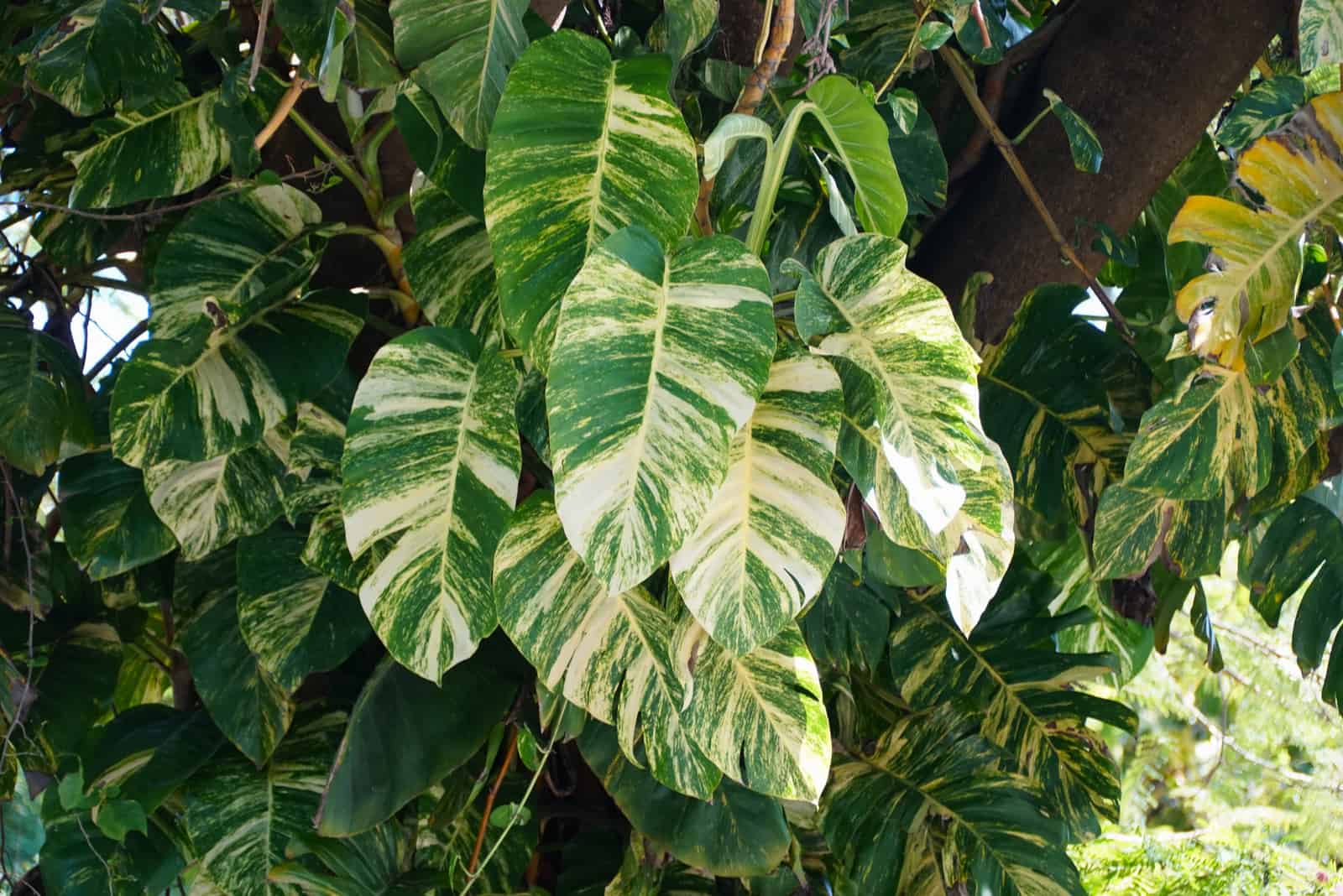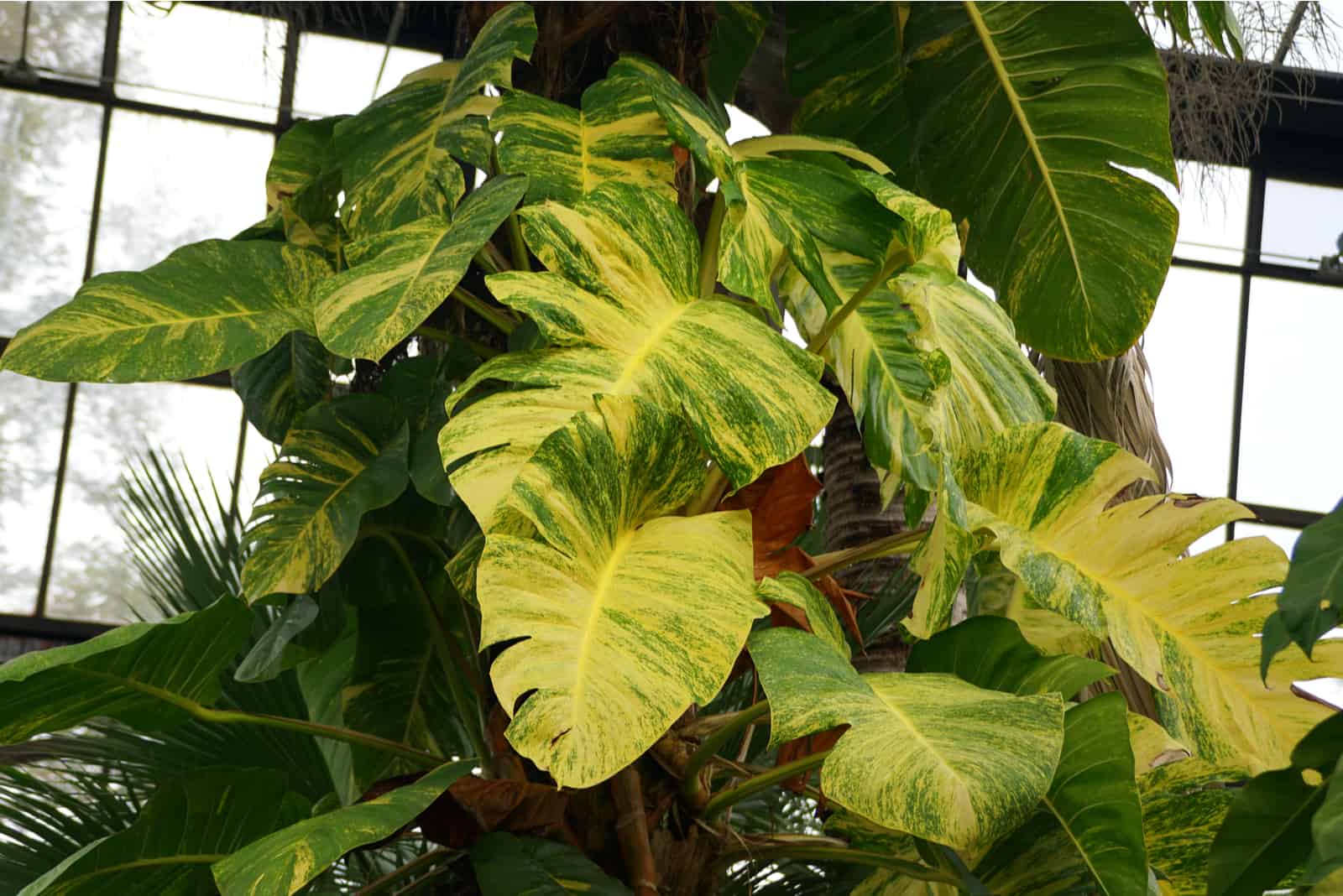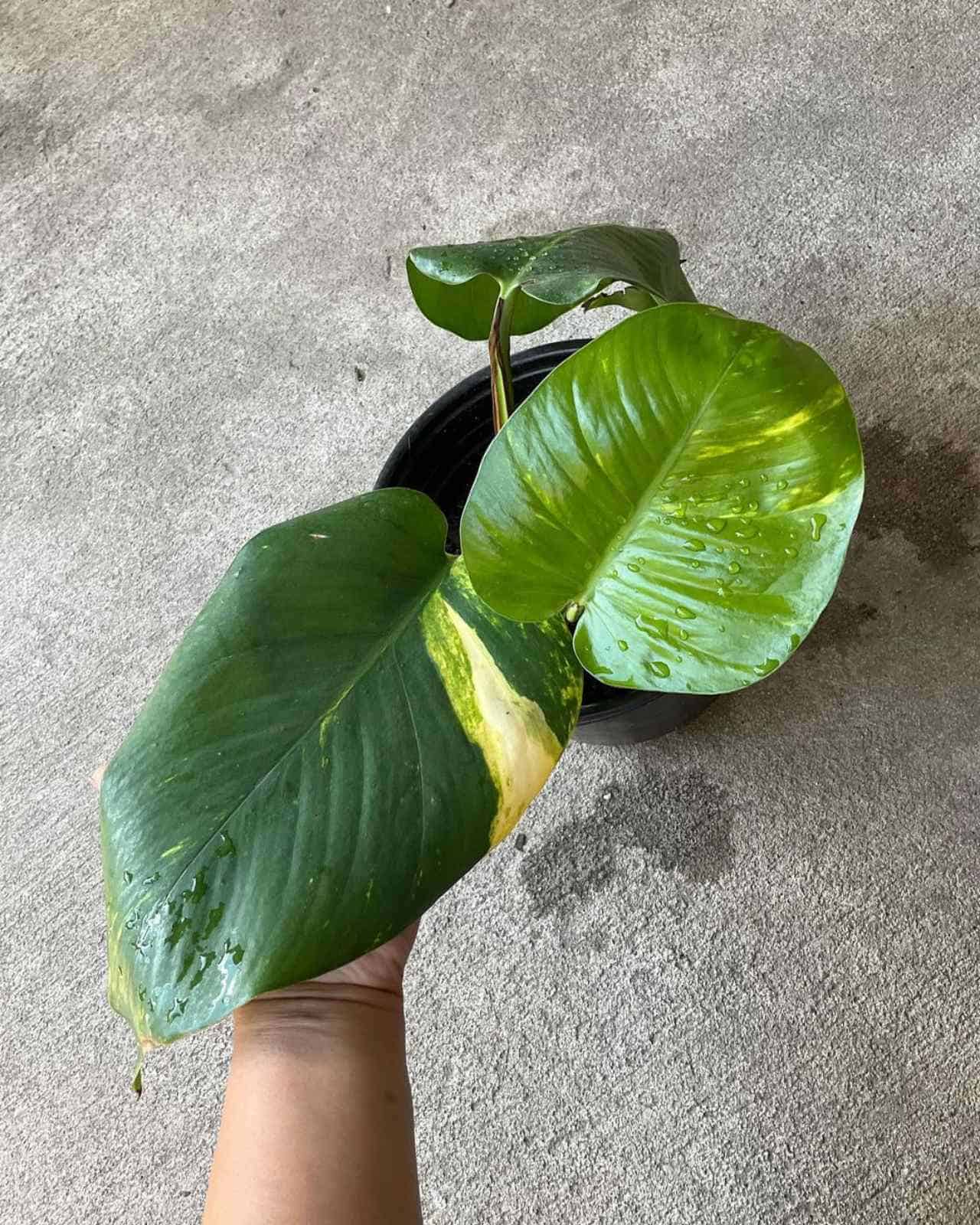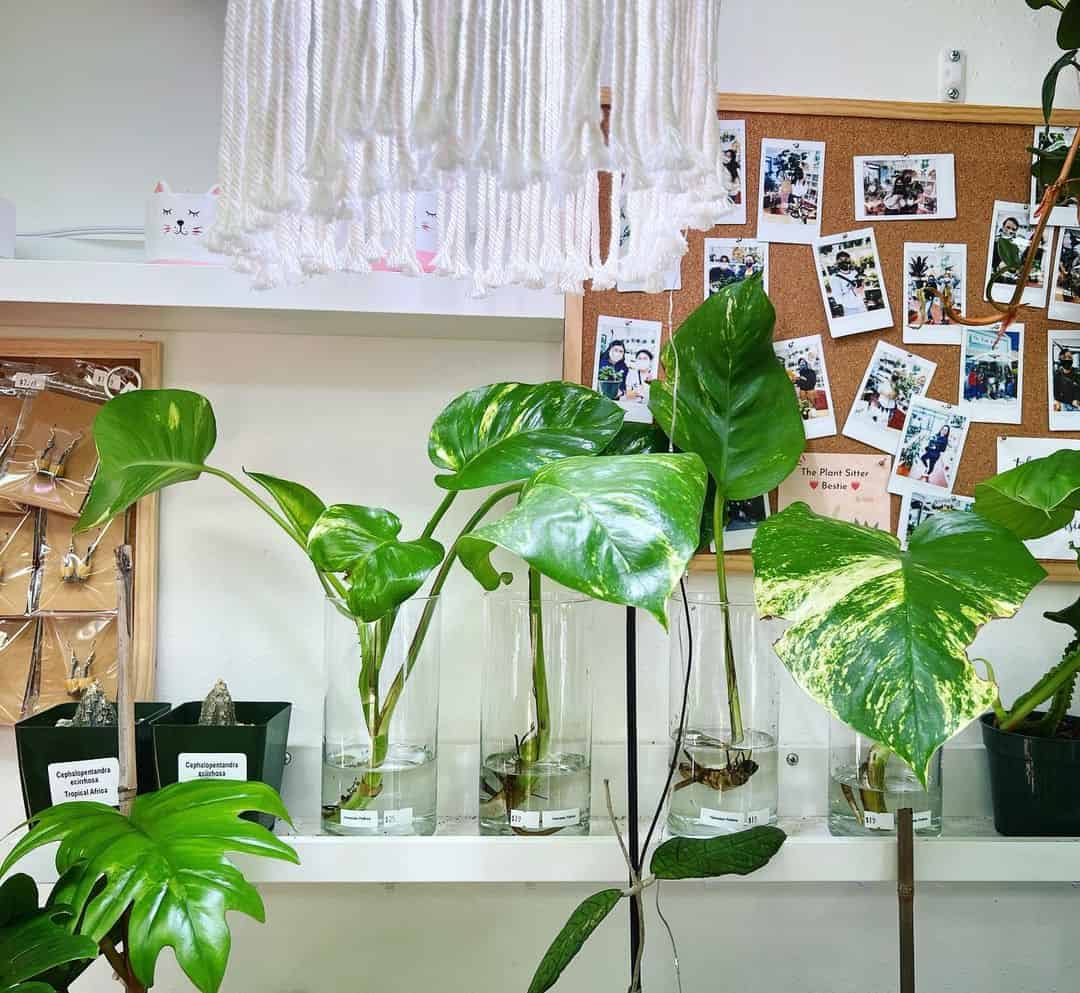You have probably heard of the golden pothos, or even grown one of your own, but have you ever heard of the golden pothos cultivar, Hawaiian pothos? If you are an experienced plant grower it may already be a part of your plant collection.
If you are a beginner, then I’m sure you’ll want to get a Hawaiian pothos for yourself when you’ve finished this article!
There are many reasons for this: it’s a low-maintenance plant, is easy to propagate, and is breathtaking when grown in hanging baskets.
This plant will forgive you if you neglect it for a little while, so it’s also suitable for beginners and forgetful experienced growers.
Well-draining and well-aerated soil, warm temperatures, bright indirect light, and frequent watering are the conditions you need to ensure for this plant to thrive.
You should also support its growth with a stake and water the plant when the topsoil is dry.
I have covered all this in detail later in the article, But before we move on, here’s some basic info.
[table id=173 /]Let’s get started!
What Does The Hawaiian Pothos Look Like?
This pothos plant is often mistaken for other plants, but in my opinion, it’s unique and looks better than most plants it’s mistaken for.
Its beauty is undoubtedly why this plant has become one of the most popular cultivars to grow indoors!
Let’s find out more about its appearance!
Leaves And Flowers
The Hawaiian pothos is known for its large and beautiful leaves, and when compared to the leaves of other pothos, such as Cebu blue, they are pretty massive.
The leaves can grow up to 12 inches long when the plant is grown indoors.
The leaves are heart-shaped and have vibrant variegation in dark green, cream, and gold shades.
The Hawaiian pothos leaves resemble Monstera deliciosa leaves, but the Monstera has larger leaves that develop fenestrations.
Unfortunately, you won’t see the flowers on an indoor Hawaiian pothos plant.
These plants are giant in their natural habitat, but when grown as indoor plants they won’t reach that size, so we only see the juvenile stages of growth.
Growth Rate And Habits
This pothos is a vigorous grower and climbs onto host plants in their native habitat. It can also be quite large when grown indoors, and if you provide it with the right conditions you can expect it to grow up to 4 feet tall and around 2 feet wide.
This is a vining plant, and growers often support it with a pole to encourage growth.
You can expect the plant to grow up to 12 inches during one growing season if you support it with a moss pole or moss pole alternatives. This means that the golden pothos has a medium to fast growth rate.
Hawaiian Pothos vs Golden Pothos
Pothos is a large genus, and all types of pothos have one or two things in common.
One of the most common species from the pothos genus is the golden pothos, commonly known as Devil’s Ivy. Hawaiian pothos is actually a golden pothos cultivar, so it’s no wonder they look alike.
The two differentiate in the color of their leaves, fenestrations, and the color of the stem.
Golden pothos develop yellowish vines if provided with the right conditions, and some vines may even be variegated.
On the other hand, Hawaiians develop green stems when given enough light.
If you provide golden pothos with the right conditions the leaves will develop fenestrations, which is not the case with Hawaiian.
Like the leaves of the Monstera, Golden pothos leaves develop fenestrations to allow the sun and rain to reach the roots. The Golden pothos has brighter yellow variegations than the Hawaiian.
These two plants belong to the same species and are tropical plants, but don’t have sheats like Philodendrons.
Both pothos varieties require similar growing conditions, but the golden pothos can tolerate low light better.
Golden pothos and Hawaiian pothos are considered invasive in places like Florida due to their fast growth rate.
Care Guide For The Hawaiian Pothos Houseplant
This pothos species isn’t fussy. It’s a tropical plant that grows under the rainforest canopy, so imitating those conditions will give the Epipremnum aureum everything it needs.
Here’s a table with an overview of the conditions you need to provide in order for your plant to grow healthy and thrive.
[table id=174 /]Let’s dig a little deeper!
Light Conditions
If you want to see your Hawaiian pothos thrive, ensure it gets plenty of bright indirect light. This pothos can grow well in low light, but it may lose variegation. Instead of dark green, gold, and cream variegations, your pothos leaves will only be green.
In some cases, this plant’s growth may be stunted if grown in low light. The rule is the more light, the more prominent the variegations.
Gold and cream portions of the leaves don’t have the chlorophyll required for photosynthesis. This is why green leaves need more light to perform photosynthesis, and in cases of low light, the variegated leaves turn green to compensate.
However, this doesn’t mean that too much sun will promote variegation, quite the opposite in fact. Direct sunlight may scorch pothos leaves and cause sunburn.
Remember that this plant climbs on its host under the forest canopy, so direct sunlight can’t reach the leaves.
I suggest you place this plant on an east-facing windowsill so it gets enough light, but not direct sunlight.
If you’re unsure about the light, consider purchasing grow lights for your precious pothos.
Temperature Conditions
This plant grows in the South Pacific, which means it’s used to warmer temperatures, but adapted well to moderate temperatures when grown as a houseplant.
It can’t tolerate cold, so it’s better to keep it in temperatures between 90 and 95 degrees Fahrenheit. Don’t let it drop below 60 degrees.
Pothos species won’t grow in freezing temperatures, and will likely die in them.
USDA zones 10 to 12 are most suitable. You can keep it in a container outside all year or plant it in the ground in these zones. Be very careful if planting it in the ground as it’s considered invasive in some areas.
You should bring the plant inside in other zones (below 10) once the temperature reaches 60 degrees, or move it even earlier in the fall. If you like, you can bring it back outside next summer.
Humidity Conditions
Photo from: @aroidfever
The ideal humidity for this pothos plant is between 50% and 70%. Don’t worry if the humidity is lower in the room where you keep your pothos as long as it’s above 40%.
If you notice the leaves have turned brown and have dry tips, consider increasing humidity levels.
Luckily, there are a couple of methods that may help you with this, and some are even DIY!
A Pebble Tray
The first method is using a pebble tray. Purchase some pebbles and a shallow container. You probably already have some in your house. Place the pebbles in the tray and pour water over it.
Then place your pothos on the tray, but make sure the roots aren’t in contact with the water. This is essential as the roots can get infected by fungus quickly and cause them to rot.
Group The Plants
The second method – and the most affordable – is grouping your precious plants. For example, if you grow Monsteras, Philodendrons, any other pothos like the Marble Queen pothos, or plants from the Scindapsus genus, you can place them next to your Hawaiian pothos.
Your room will undoubtedly look more beautiful, and it will also help the humidity to spread evenly.
Find A New Place For The Plant
Another method is moving your pothos to a different room. For example, you can place it in a bathroom or kitchen as both places have naturally higher humidity and are quite suitable for pothos. Additionally, the rooms will look great with some pothos in them!
Use A Humidifier
If you prefer using technology to solve your problems, you can purchase a humidifier. Although these devices may seem expensive, they are worth it as you won’t need to worry about humidity at all. They monitor and increase humidity, which will help your plant grow healthy and thrive.
You can also try misting your pothos, just make sure the leaves dry completely as they could soften or rot if there’s excess water on them for an extended period.
Watering
Photo from: @rachel.plantdiary
In the world of plants, watering is the key to healthy growth. That’s why it’s so essential to know how much water the plant needs and how often to water it.
Beginners often search for a fixed watering schedule, but in most cases a fixed schedule won’t guarantee that your plant receives enough water. A fixed watering schedule may cause a more dangerous problem: overwatering.
The general rule is to water the Hawaiian pothos every 5 to 7 days. However, I prefer the rule of always checking the soil before watering.
This pothos species requires moist soil, so if you let the soil dry out entirely between waterings, the plant will droop and the leaves will be crispy. You will notice the leaves of your pothos are curling, which is how your plant tells you it’s thirsty.
If you notice these changes, water your pothos thoroughly.
On the other hand, the soil shouldn’t be soggy either. This plant has a shallow root system, which is sensitive to overwatering.
Excess water in the soil suffocates the roots and will likely result in fungi inhabiting the soil and eating the decaying roots. The result of overwatering is root rot, which is a severe disease that can kill your plant.
When To Water
You’ll need to create your own watering schedule. In other words, you’ll need to monitor the plant and regularly check the soil to see when it needs watering.
Wait until the top 2 inches of the pothos soil are dry. The easiest way to check soil moisture is by sticking your finger in it. Alternatively, you can use a wooden stick or a toothpick, and if there’s some soil around when you pull them out, wait a little bit more before watering your pothos again.
If you ensure all the right conditions for your pothos plant, you should water it once a week during the growing season (spring and summer).
Cut back on watering during colder months as the plant doesn’t grow actively.
Soil
The ideal soil for this pothos species is porous, well-draining, and slightly acidic. A good potting mix is essential for your pothos to grow healthy.
Luckily, you aren’t limited to just one option when it comes to the potting mix.
For example, you can purchase an all-purpose potting mix and add perlite or coco coir (3:1) to improve drainage.
You can also mix garden loam with coarse sand and sphagnum peat moss.
Potting mix with added perlite and vermiculite is perfect if you live in a colder climate.
There’s one more hack to improve drainage: purchase a pot with drainage holes so the excess water can leave the pot.
Fertilizing
Although the Hawaiian pothos isn’t a heavy feeder, you can fertilize it occasionally to promote growth.
There’s no specific fertilizer for this plant, but a balanced (15 15 15 or 20 20 20) water-soluble liquid fertilizer will work well. Consider purchasing a slow-release fertilizer as it’s easier to use.
You should fertilize your pothos during the growing season (spring and summer). The plant is growing actively and could benefit from fertilizer at this time.
On the other hand, don’t fertilize in the fall or winter as it may damage the plant, so instead of a healthy pothos that grows better, you’ll end up with a burned and damaged plant.
If you have purchased a new Hawaiian pothos plant or been gifted one, I suggest you check if the plant is already fertilized. If it is, wait for about 5-6 months before you start fertilizing.
Pruning
This pothos is a vining plant, so it needs pruning once it starts getting larger.
If you grow these pothos in a hanging basket, expect growth 4 feet down and 2 feet across.
If you’re aiming for a specific shape, you should prune it more often. On the other hand, the plant will grow perfectly fine if you just prune it once or twice a year.
I prefer growing this pothos in hanging baskets as they can get quite bushy when grown in a pot.
When pruning, make sure to remove dead, discolored, or damaged leaves as they may affect growth.
Additionally, always sterilize your cutting tools to avoid contamination.
When And How To Repot Hawaiian Pothos Plant
The general rule for repotting this pothos species is to do it every 1 or 2 years. However, this depends on many factors like the growth rate of your particular pothos.
The plant may show signs of stunted growth when grown in low light and may wilt if underwatered, so repotting is not needed in these cases until the plant has completely recovered.
Don’t worry if your pothos are growing in a smaller container, especially if you prefer them to be smaller and not reach their full size.
Therefore, the bigger the container, the larger the plant.
However, if you want to repot the plant to encourage its growth, bear in mind that the new container shouldn’t be much larger than the previous one.
Just because the plant has more soil surrounding it doesn’t mean it will get more nutrients. It’s quite the opposite; excess soil retains more water so the root system may be affected.
This plant grows new leaves in the spring, so it would be best if you repotted it before then.
The best indicator of repotting is roots peeking from the pot’s drainage holes. This is how you know they need more space to grow.
Ensure Support
These pothos climb on host plants in their natural habitat, and this means they appreciate support when grown as indoor plants.
You can use a moss pole for this, which will aid your plant in climbing around the pole. The pothos adores moss, so it makes its entire trailing job much easier.
Another option is using metal poles. These poles are more practical and sturdy and can hold mature trailing pothos better than moss poles.
Bamboo canes can also be used to support a pothos, and they combine perfectly with the plant’s appearance as both are beautiful! Bamboo canes are simple to install and durable enough to sustain a trailing pothos and support its growth even more.
It’s beneficial to know how to grow trailing pothos because it’s essential to promote growth, and not slow it down.
Cleaning
Don’t worry, cleaning the pothos plant doesn’t take much time or require some special device. All you need is a sponge and some water. Alternatively, you can use a spray bottle.
Gently rub the pothos leaves with a sponge dipped in water, and make sure to also dry the leaves!
Excess water on the pothos leaves can cause them to soften and eventually rot.
You don’t have to clean the leaves too often, just remove dust using this technique when you notice it.
How Do You Propagate An Epipremnum Aureum?
Photo from: @plantsitter_california
This means you can easily get more plants for your collection or to give to your friends. I’m sure they will appreciate the gift as much as you would.
The easiest way to propagate this pothos is by stem cuttings.
Let’s find out more!
Stem Cuttings
If you decide to use stem cuttings for propagation, you first need to know how to take them.
I will start with the equipment you need for taking stem cuttings. Don’t worry, the list is short.
- A sterilized cutting tool (shears, scissors, knife)
- Potting mix
- A container
- Jar with water (optional)
First, select a healthy section of the stem about 4-6 inches long. It should have at least two nodes and two leaves attached.
Identify the area below the node and make a cut there.
Now you have the cutting, so it’s time to put it somewhere to grow the roots. You have two options: soil or water.
You can plant the cuttings directly in the soil or submerge them in water.
If you are a beginner, I suggest submerging the cuttings in water first so you are able to see how the roots develop.
Fill a jar with water and submerge the cutting. Make sure one node is in the water and all the leaves are above – and not in contact with – the water to prevent them from rotting and the propagation failing.
Put the jar in a warm place with bright indirect light and change the water regularly. Every two days will do just fine.
The roots will form in about two weeks, but let them grow for around four weeks until they are an inch long. Plant the cuttings back in the original pot.
If you decide to plant directly in the soil, make sure you water the soil after you plant the cuttings and mist the soil regularly.
Common Issues
Luckily, this pothos is quite resistant to pests and diseases. However, some problems may occur even if you take good care of the plant.
Let’s dig a little deeper!
Diseases
The two most common diseases that affect this pothos are bacterial leaf spot and root rot.
Bacterial leaf spot is a fungal infection that creates lesions on the leaves, which then turn yellow and eventually fall off.
The best idea would be to remove any affected leaves and spray the plant with a fungicide.
If you overwater your pothos, you’ll notice yellow leaves and mushy potting soil. The reason for these changes is root rot.
You should remove all affected roots, apply fungicide, and repot the plant if this happens.
Pests
Although pests don’t often affect these pothos, mealybugs and spider mites might!
If you notice a whitish and cottony substance on the leaves, your pothos may be dealing with mealybugs. Mix dish soap with water and spray the leaves to combat them.
Tiny eight-legged creatures that mainly inhabit the undersides of the leaves may also be present, and these indicate spider mites.
You can use neem oil or a chemical pesticide to remove them.
Hawaiian Pothos Leaves Losing Variegation
Direct sunlight will cause the Hawaiian pothos variegated leaves to lose their yellow color.
Make sure to move the plant to bright indirect light.
You can use curtains to provide partial shade during the summer months.
FAQs
Is the Hawaiian pothos toxic?
This plant is considered mildly toxic to humans and pets. Don’t keep it around small children or pets as they may ingest the leaves, which can cause throat and lip swelling, nausea, and vomiting.
Are Hawaiian pothos rare?
It may take some time to find this pothos species in comparison to other plants from the same genus. However, it isn’t as rare as some other pothos like the Harlequin pothos.
What are the benefits of the Hawaiian pothos?
The Epipremnum Aureum is a low-maintenance plant suitable for beginners.
These pothos species are also air purifiers, which means they clean the air of harmful chemicals.
Wrapping Up
There are plenty of reasons to get yourself a Hawaiian pothos! They are super easy to grow and should be on your wish list.
They will reward you with fascinating variegated leaves if you provide them with the right conditions.
The Hawaiian pothos has unique features and would make a great addition to your home.
Until next time!
Like this post? Share or pin it for later!






